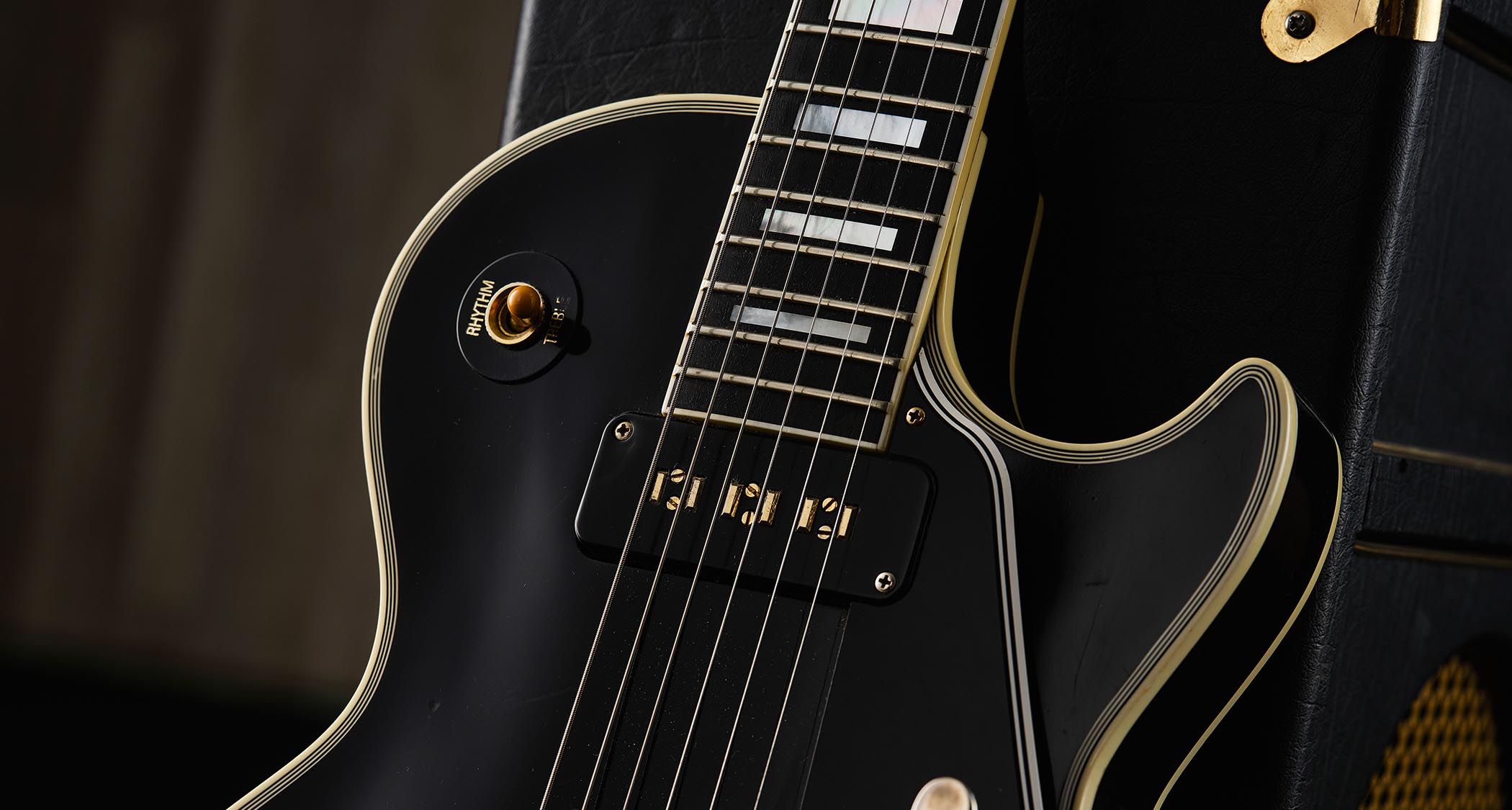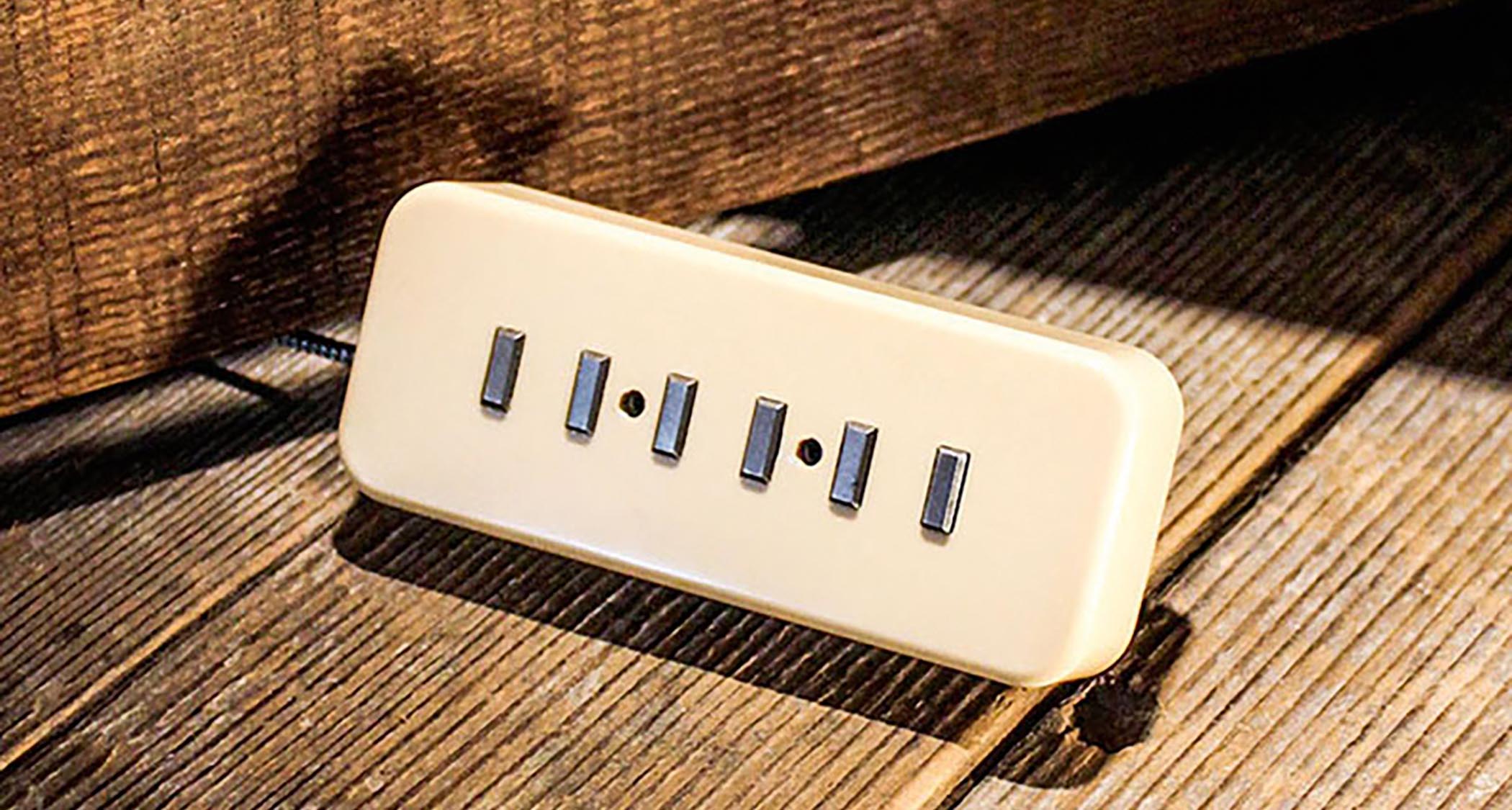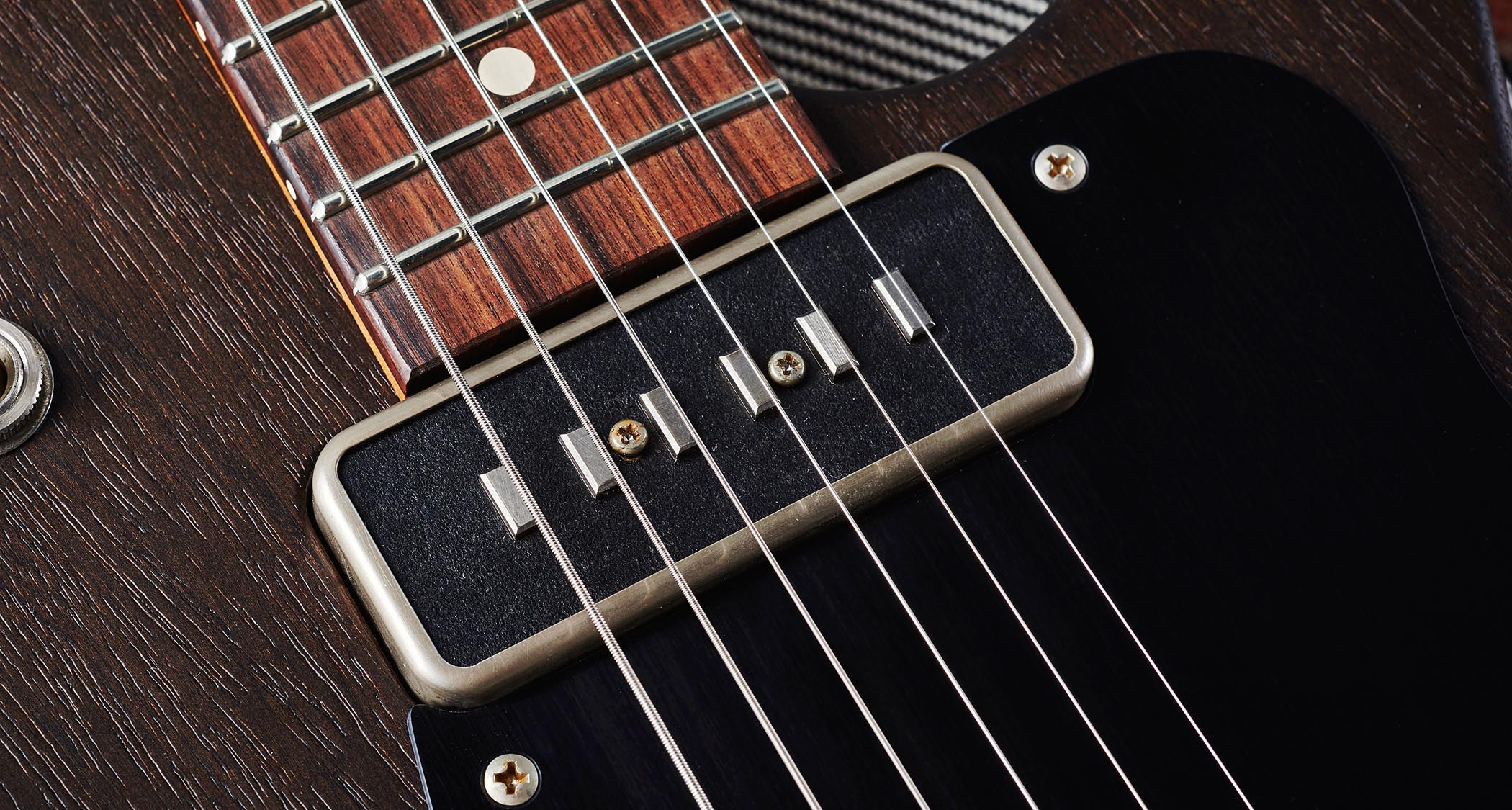“This wasn’t Seth Lover’s instinctual way to create a pickup. This was Les Paul in his ear saying, ‘This is what you should do”: The story – and tones – behind Gibson’s distinctive Alnico V ‘Staple pickup’
A lesser celebrated pickup the ‘Staple’ pickup features those distinctive rectangular polepieces and a sound that makes it ripe for rediscovery, especially with a range of replicas on the market

Many years ago, in one of the first issues of Guitarist magazine I ever read, there was a report from a vintage guitar show. Among the pics of Paisley Telecasters and ’Bursts was a shot of a black Les Paul Custom fitted with what, to my inexperienced eyes, appeared to be an unusual neck pickup.
It had chunky rectangular polepieces and looked like a relic from an earlier era. This, I later discovered, was Gibson’s Alnico V pickup, also known as the ‘Staple’ pickup because of those evenly spaced rectangular polepieces.
It was not all that surprising that I didn’t know what it was, however, because it had a short life in Gibson’s guitars. Introduced in 1954, it was designed to take the warm tone of the P-90 pickups fitted to most Gibson electrics at that point and add a little more clarity to the equation.
Stuart Robson of Sunbear Pickups believes it was created to placate that eternal tinkerer Les Paul, who often fitted heavily modified electric guitar pickups of his own devising to his Les Pauls, sometimes home-wound on DeArmond pickup internals.
This would hardly have reflected well on Gibson’s then-standard P-90, the stock pickup of nearly all Les Pauls from 1952 to 1957, so Stuart believes they devised the Alnico V pickup to get closer to the style of neck pickup Les really wanted.

“Like so many things with the early Gibson stories, you never quite know what’s absolutely the truth or what’s what people have surmised over the years,” Stuart says with a chuckle. “But my personal take on this is that there are pictures of Les Paul in the early 50s playing what were probably the very first Les Paul Customs. And you can see that in the neck of those guitars, he had pulled out what was presumably a stock P-90 and put in [what looks like] a Dynasonic [also known as DeArmond Model 2000] pickup.
The original Gibson Alnico V staple pickup – with the exception of the wire and the shape of the magnet – is, in terms of construction, almost a direct replication of the Dynasonic
Stuart Robson
“So, while I’ve never heard this directly from anyone at Gibson, my presumption has always been that Gibson probably turned around to Les and said, ‘Well, we really would rather not have a Gretsch pickup in the guitar that you’re playing on stage every night. Why don’t we make something which is basically the same thing?’ Because the truth is that the original Gibson Alnico V staple pickup – with the exception of the wire and the shape of the magnet – is, in terms of construction, almost a direct replication of the Dynasonic.
Get The Pick Newsletter
All the latest guitar news, interviews, lessons, reviews, deals and more, direct to your inbox!
“Nearly everything about it is the same, right down to the way that the magnets are raised and lowered,” Stuart continues. “So I think I think probably what Gibson were doing was trying to give Les a neck pickup with the Gibson name on it that would do the job that he was swapping in the [modified] Dynasonics to do – which, in all likelihood, given his playing style, was to make the neck pickup clear.”

Take Five
Whatever the truth of this might have been, the arrival of the PAF humbucker in 1957 saw the Alnico V pickup consigned to the graveyard of history. When we asked Gibson’s now vice president of product, Mat Koehler, about the reason for the complete phasing out of the Alnico V a couple of years back, he gave this answer:
“I now understand that they’re very difficult to build. It’s part of the reason why we’re redeveloping the staple pickup as we speak, to be more factory-friendly. The design itself was a little crude – we have Seth Lover’s original drawings and you can tell that this wasn’t his instinctual way to create a pickup.
“This was Les Paul in his ear saying, ‘This is what you should do.’ I think that had a lot to do with it. But it does serve a purpose and it has a fantastic jazz tone, which is why you see it on archtop models, too. I think, really, the reason that it wasn’t more prevalent is just because of the difficulty to construct it.”
Gibson isn’t the only one to be taking a second look at the Alnico V pickup, however. A number of independent pickup makers have revived the design, in simplified form, because people are belatedly realising that the pickup’s clarity is its secret weapon, making it sound more like an immense Strat neck pickup than a vintage P-90.
The effect is quite addictive, as I discovered when I tried a Patrick James Eggle Macon Special fitted with Mojo Pickups’ take on the Alnico V – the P90 Soapbar Staple. Paired with a Filter’Tron-style bridge humbucker it offered bounce and bloom that contrasted beautifully with the bridge pickup’s crisp grind.
The experience stuck in my mind, so when the aforementioned Stuart Robson of Sunbear Pickups mentioned he was developing his own take on the Alnico V pickup, I pricked up my ears. I was looking for a way to customise my already-modded AVRI ’52 Telecaster and I suddenly thought what a nice addition a staple pickup at the neck might be.

I’m not one of the traditional Tele neck pickup’s detractors; some players don’t rate them at all, but I’ve always liked the little silver tube that the Tele has sported at the neck since its inception.
However, while not in the least unhappy with my Tele’s excellent set of Lollar Special T pickups, I think I must be a frustrated jazz player as I’m on the neck pickup more than anything else – and, as such, I wouldn’t mind if it had some serious fatness and clout beyond the design limitations of traditional Tele pickups.

The Alnico V staple has always intrigued me. I’ve always thought it looked cool, too. In the neck position of a Tele, it could look both vintage and a bit different, I reflected. So I took the plunge and called Stuart at Sunbear and ordered a single, humbucker-sized SB-Staple V pickup with a plan to put it in the neck position of my Tele.
Stuart offers some great styling options on his pickups, which I made full use of, opting for his ‘aged’ finish and a tortoiseshell cover on top of the pickup where the ‘staples’ protrude.
The pickup is wound to 7k DC resistance, so it shouldn’t be a mismatch with the Lollar Special T bridge pickup that will remain in place, which is wound to 8k DC resistance. In fact, they should match up perfectly, with the neck tending to sound a bit louder anyway.
As Stuart winds such pickups to order, I knew there’d be a little wait while he worked his magic. That gave me a bit of time to put out a request for help with routing the body and scratchplate to accept the Staple V, a call that was answered by the estimable Pete Lewis at Lewis Guitar Works.
Pete makes impeccably turned-out electrics that have the DNA of classic designs, while adding unique and very cool twists of his own. On this occasion, he kindly said he was happy to make the required customisations to my much-modded reissue Tele once the pickup arrived. For now, I’ll just watch and wait for the postman to come, box in hand, up the drive. Stay tuned to hear how the project turns out…
Jamie Dickson is Editor-in-Chief of Guitarist magazine, Britain's best-selling and longest-running monthly for guitar players. He started his career at the Daily Telegraph in London, where his first assignment was interviewing blue-eyed soul legend Robert Palmer, going on to become a full-time author on music, writing for benchmark references such as 1001 Albums You Must Hear Before You Die and Dorling Kindersley's How To Play Guitar Step By Step. He joined Guitarist in 2011 and since then it has been his privilege to interview everyone from B.B. King to St. Vincent for Guitarist's readers, while sharing insights into scores of historic guitars, from Rory Gallagher's '61 Strat to the first Martin D-28 ever made.
“Classic aesthetics with cutting-edge technology”: Are Seymour Duncan's new Jazzmaster Silencers the ultimate Jazzmaster pickups?
“We’re all looking for new inspiration. Some of us have been playing humbuckers for a long, long time”: Are we witnessing a P-90 renaissance? Warren Haynes has his say












